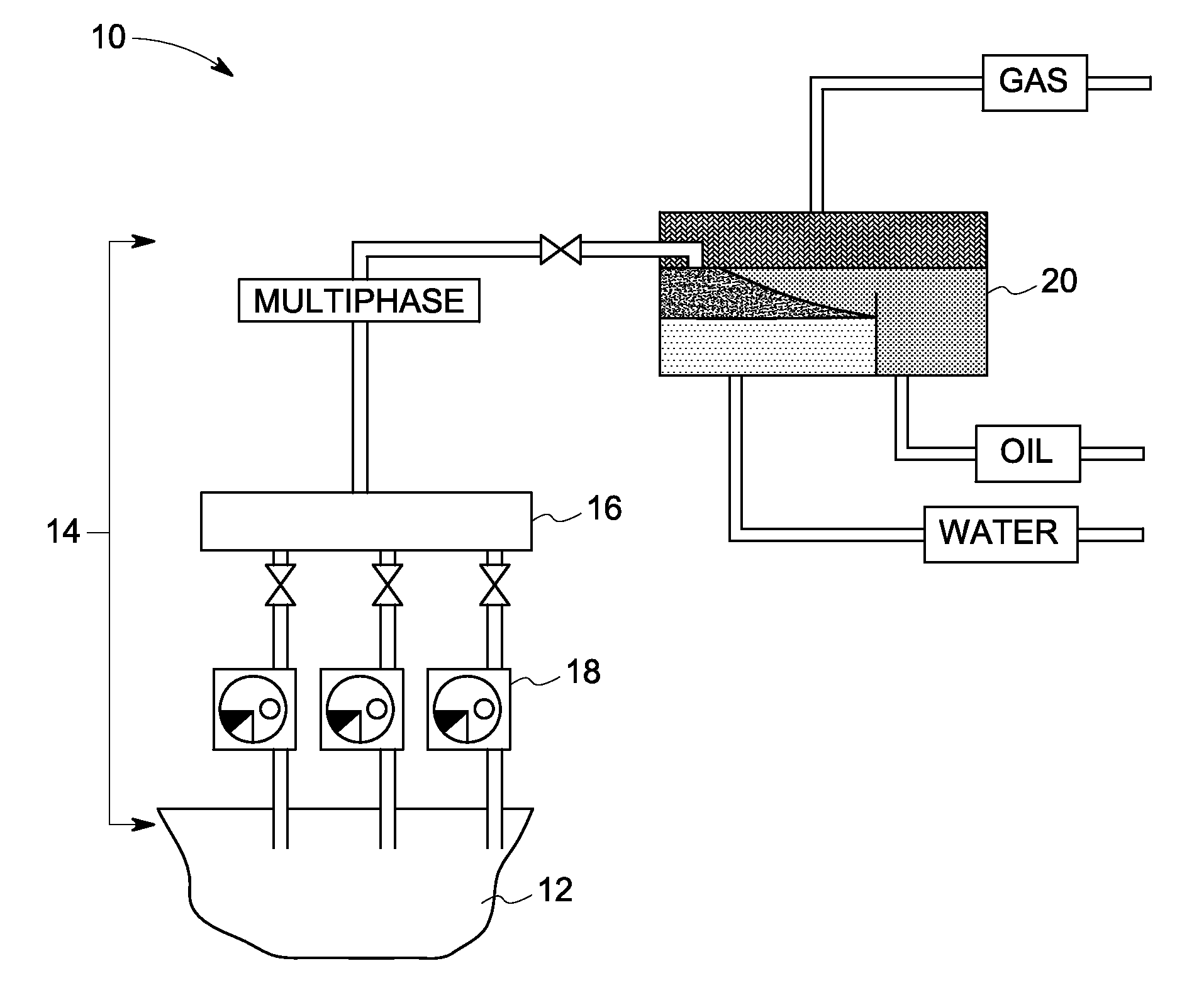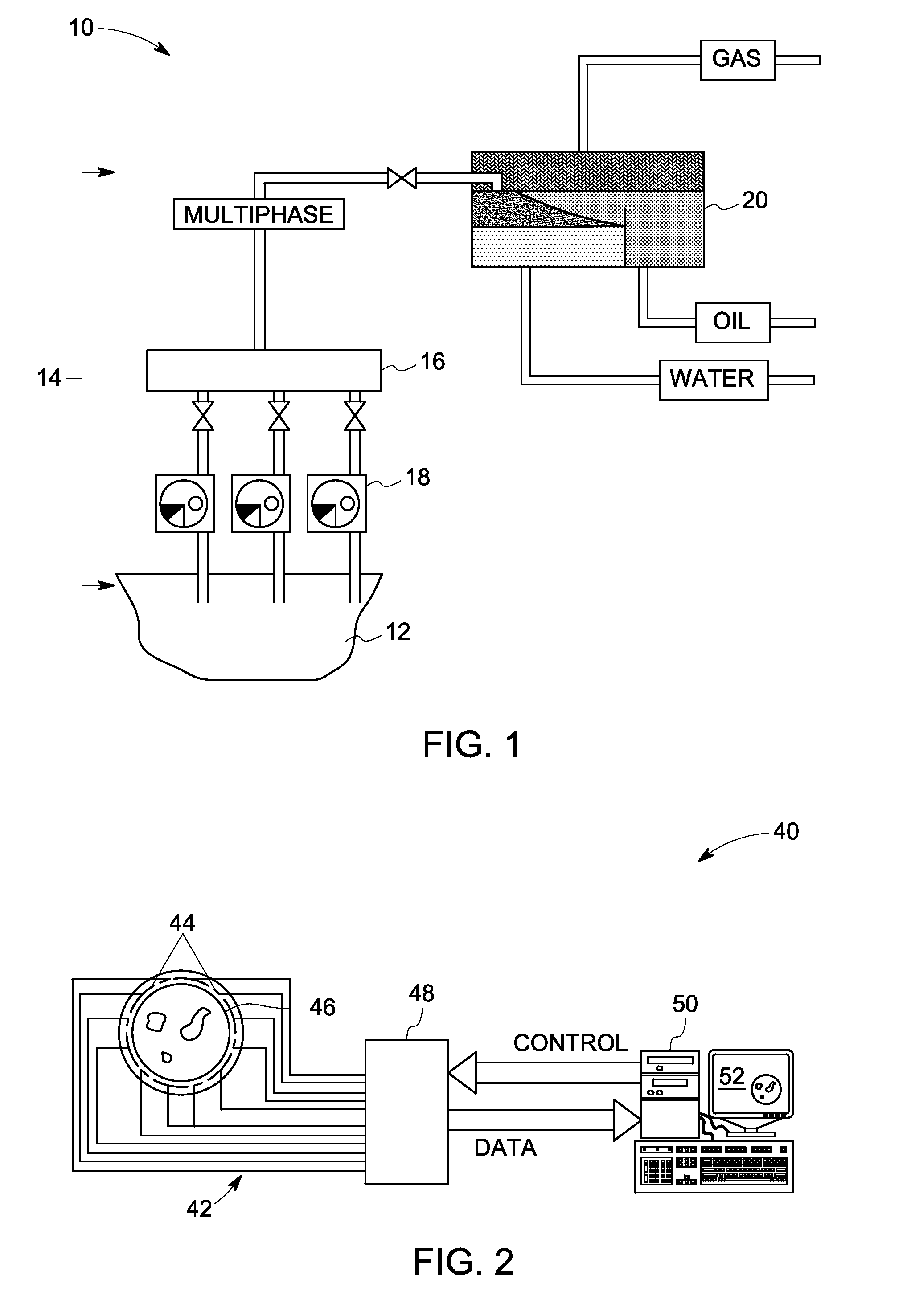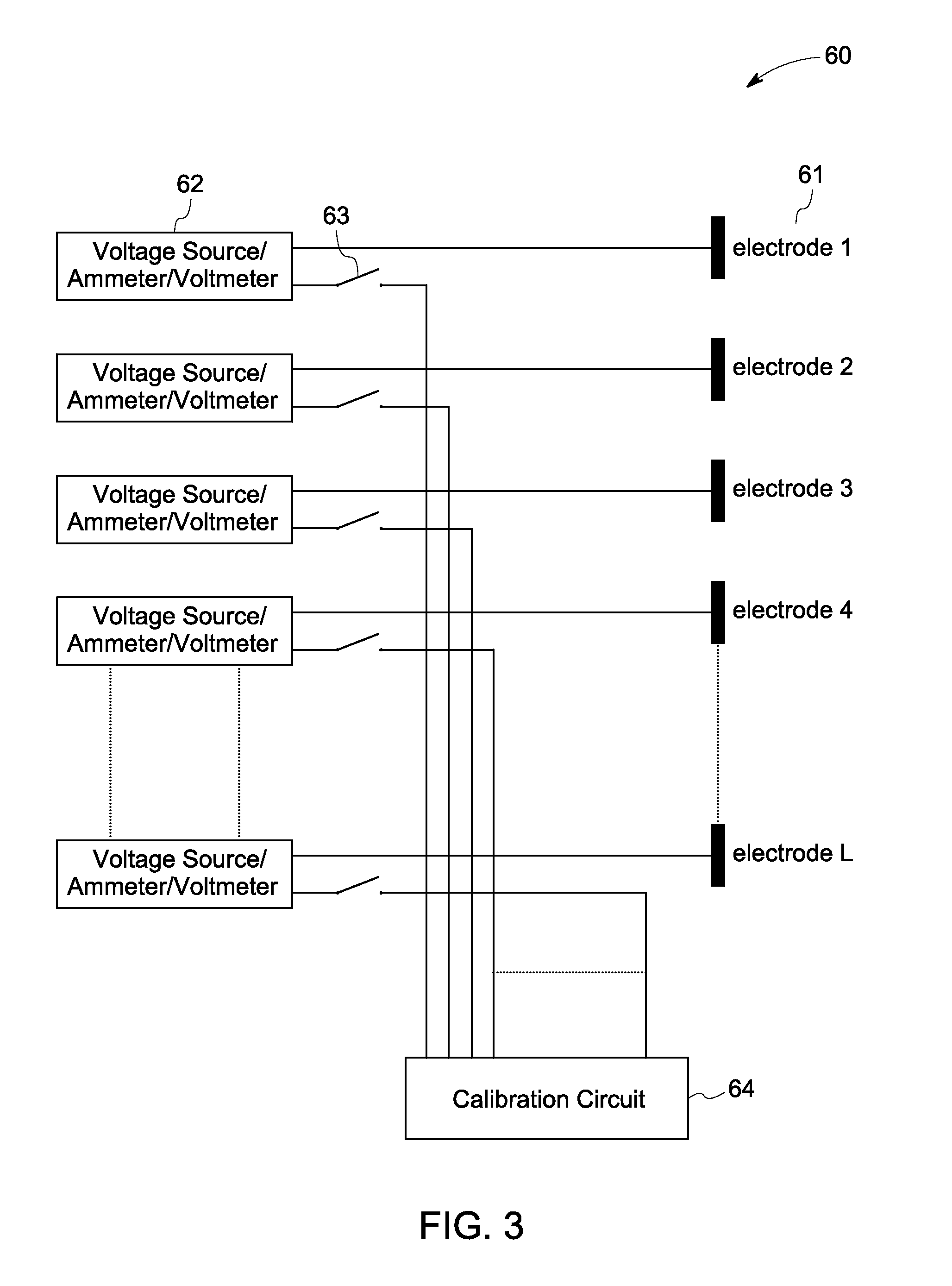Electrical network representation of a distributed system
a distributed system and electrical network technology, applied in the direction of instruments, diagnostic recording/measuring, material impedance, etc., can solve the problems of low signal-to-noise ratio, time-consuming technique, and non-uniform reaction zones or concentrations of recirculating flows
- Summary
- Abstract
- Description
- Claims
- Application Information
AI Technical Summary
Problems solved by technology
Method used
Image
Examples
Embodiment Construction
[0019]As discussed in detail below, embodiments of the present invention function to provide a system and a method for measuring characteristics of a multi-material object. In an example of a multiphase flow, the characteristics of the object may include volumetric fractions and flow rates of oil, water, and gas (in this context referencing gaseous hydrocarbons) flowing through conduits. Although the invention is described with reference to a use in oil / gas / water measurements, it is by no means limited to such applications; rather, aspects of the invention find application in a wide variety of industrial, healthcare and chemical processes such as, for example, cancer diagnosis and water treatment processes. The characteristics of such multi-material objects may be quite different from the examples given for multiphase flow.
[0020]FIG. 1 shows an oil production facility 10 according to an example embodiment. The oil production facility typically includes multiple oil wells 12 that are...
PUM
 Login to View More
Login to View More Abstract
Description
Claims
Application Information
 Login to View More
Login to View More - R&D
- Intellectual Property
- Life Sciences
- Materials
- Tech Scout
- Unparalleled Data Quality
- Higher Quality Content
- 60% Fewer Hallucinations
Browse by: Latest US Patents, China's latest patents, Technical Efficacy Thesaurus, Application Domain, Technology Topic, Popular Technical Reports.
© 2025 PatSnap. All rights reserved.Legal|Privacy policy|Modern Slavery Act Transparency Statement|Sitemap|About US| Contact US: help@patsnap.com



